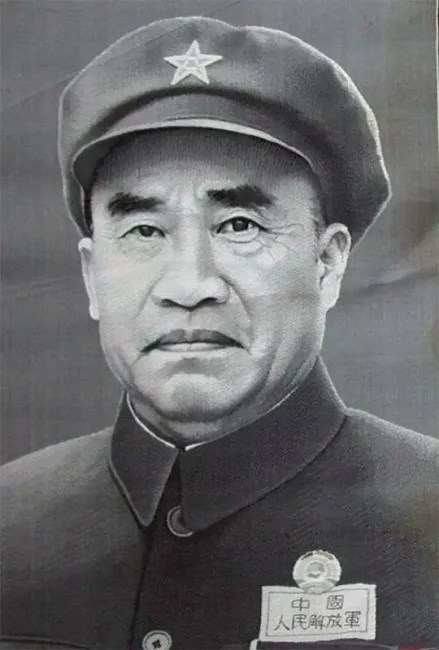- Military History
- Biographies
- Militarians Biographies
- General & Warlord Zhu De (also known as Chu Teh)
General & Warlord Zhu De (also known as Chu Teh)
A Communist general and warlord and during the revolution and civil war in China
Zhu was born into extreme poverty in Yunnan; however, his early potential was recognized by his clan, which funded a classical Confucian education for the boy. After graduation, Zhu entered the civil service system but soon turned to the military, instead of gaining admission to the Yunnan Military Academy. Upon graduation, he was commissioned in the Yunnan provincial army about 1906. In October 1911, with the outbreak of revolution, Zhu seized control of several military local units and led them in an invasion of the neighboring Szechwan province.
In 1912, General Yuan Shih-k'ai took control of the government and the era of the warlords begun. Zhu grasped the opportunity to establish himself as warlord, gathering wealth and becoming addicted to opium.
Remarkably, however, he was subsequently caught up in the tide of patriotism and nationalism, overcame his addiction and traveled to Germany in 1919 with the object of studying European military and political systems.
In Europe, he met the charismatic Zhou Enlai (Chou En-lai), who persuaded him to the Communist cause. Zhu joined the Party, returned to China and was commissioned a general and division commander in the KMT (Nationalist) army in 1926. In charge of the Nanchang garrison in Kiangsi, he laid the groundwork for Zhou's insurrection there, which began on August the 1st in 1927. Breaking with the KMT, he organized and led Communist forces into the countryside to evade the approach of a large KMT army.
He joined forces with Mao Zedong(Mao Tse-tung) in southwestern Kiangsi during the spring of 1928. Zhu and Mao made a formidable team, with Mao planning persuasive political doctrine and Zhu providing the military leadership to transform doctrine into action. Zhu developed and exploited guerrilla tactics to defend the Kiangsi Soviet territory against the first of Chiang Kai-shek Bandit Suppression Campaigns during December 1930 and June 1933. By the fifth campaign, Zhu was directed to meet Chiang Kai-shek's forces head-on conventionally. The result was a disaster as the Communists were outnumbered and outgunned (December 1933 to September 1934).
With his army on the verge of disintegration, Zhu broke out from Kiangsi during October and November and began the so-called Long March, the 5000-mile (8000km) epic journey across China undertaken by the Chinese Communists during 1934-36. An achievement some have called the most incredible march in history. At the start of 1935, Zhu helped to secure power for Mao from his opponents at the Tsuni conference and during the march, it was Zhu who established and maintained military operations. He became the chief architect of the reconstituted Red Army after the march ended at Yenan, Shensi province, in December 1936.
With the outbreak of the Sino-Japanese War in the summer of 1937, Zhu assumed command of the Eighth Route Army, which U.S. commando pioneer Evans Fordyce Carlson observed and admired. However, the bold Hundred Regiments campaign against the Japanese in northern China (from August the 20th until November the 30th in 1940) proved disastrous, although Communist propaganda painted it as a victory. Fortunately for the Chinese cause, Zhu did not swallow his own party's line and learned from the Hundred Regiments fiasco the folly of going head to head with superior Japanese forces. From this point on, he developed guerrilla and commando tactics aimed at harassing the Japanese and forcing them to commit large numbers of troops who might otherwise be used in battle.
As the war with Japan ended in 1945, the Red Army had been transformed into a highly effective guerrilla force of 800,000 men which Zhu now employed to take control of the northern Chinese countryside and occupy the major cities directly after the war years.
He positioned the Red Army as an effective instrument of political power during the post-World War II - Civil War (August 1945 to December 1949). When the People's Republic was declared in 1949, Mao elevated Zhu to the post of Defense Minister. He moved from that post in 1955 to become one of ten marshals of the People's Republic, then retired to a series of ceremonial positions.
The Cultural Revolution of 1967-70 nearly brought Zhu down, but he was rehabilitated during the backlash against the Maoist extremism that followed the Cultural Revolution. He was named head of the Standing Committee of the National People's Congress and served in that body until his death.
He continued to be a prominent elder state leader until his death on 6 July 1976. His passing came six months after the death of Zhou Enlai and just two months before the death of Mao Zedong. Zhu was cremated three days later and received a funeral days later.
General & Warlord Zhu De (also known as Chu Teh) - Quick Facts
- 18th Group Army (China)
- National Revolutionary Army (China 1925-1947)
- People's Liberation Army - PLA (China - since 1927)
- Yunnan clique
- General
- Marshal
- Warlord
- Chinese Revolution or Xinhai Revolution (1911 - 1912)
- Northern Expedition - China (1926 - 1928)
- Chinese Civil War (1927-36 & 1946-50)
- Second Sino-Japanese War (1937-1945)
- WWII (1939-1945)
- {{#owner}}
- {{#url}} {{#avatarSrc}}
{{name}} {{/url}} {{^url}} {{#avatar}} {{& avatar}} {{/avatar}} {{name}} {{/url}} - {{/owner}} {{#created}}
- {{created}} {{/created}}
























